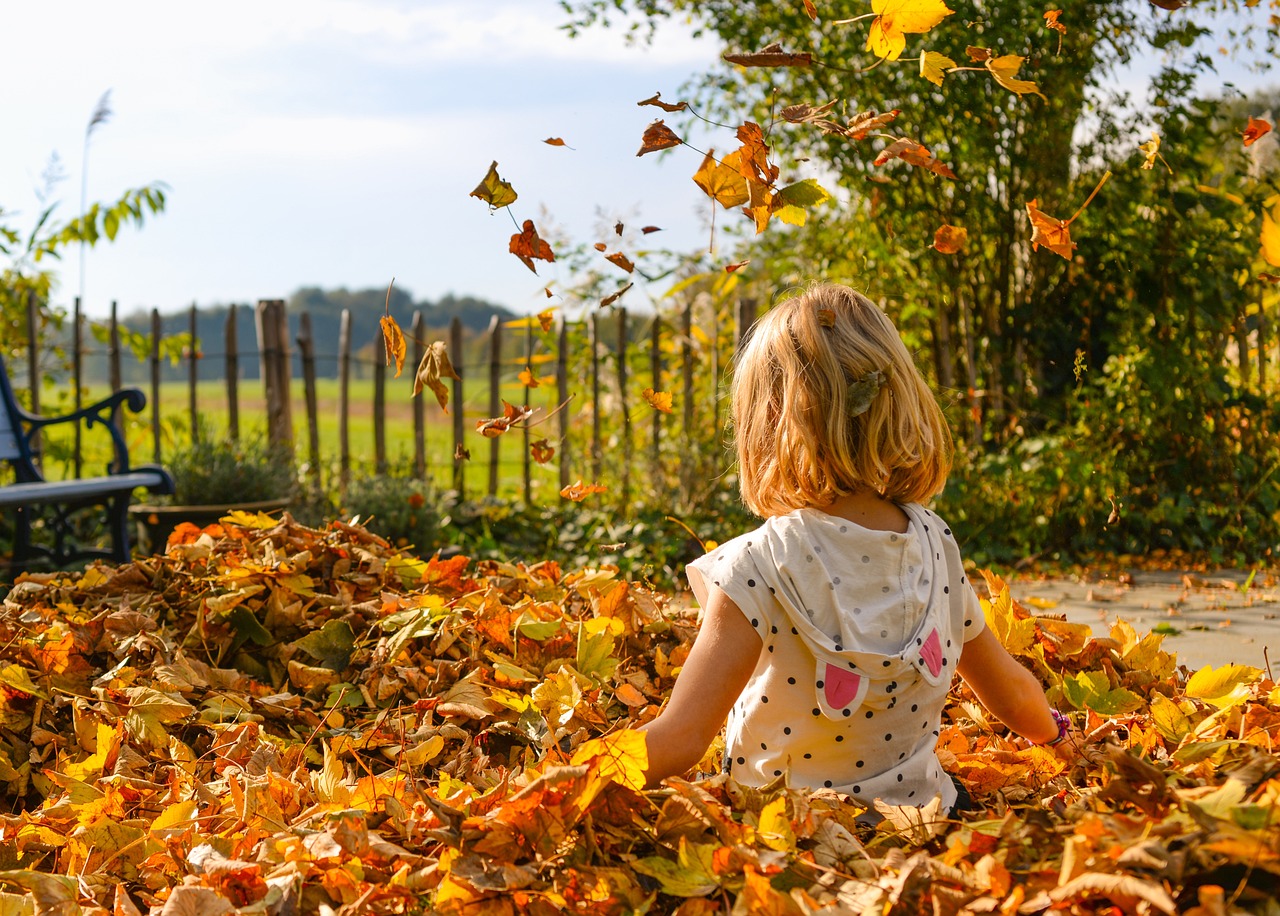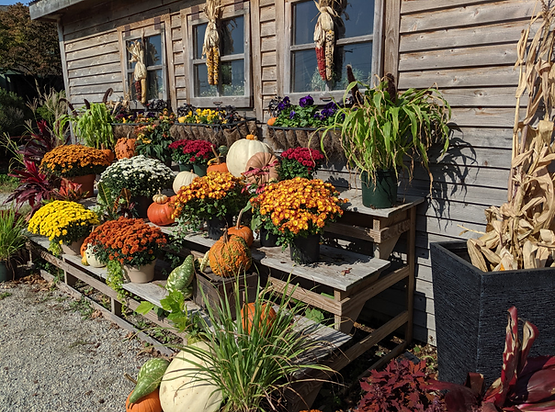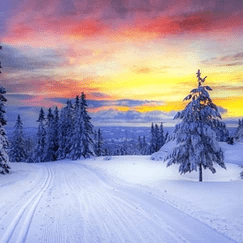To Rake or Not to Rake? Leave the Leaves
When I was a little girl my family had a yearly fall tradition. From late October through mid-November we would begin raking the autumn leaves that appeared like a colorful carpet woven by nature covering our entire front yard. While my parents were intently gathering the golden blanket my sister, brother, and I would wickedly jump into the piles and scatter the once neat heaps into a chaotic mess. Eventually they would be collected and put by the curb for pickup.
I continued this custom when I had my own children. In fact, my kids would always look forward to the fall when they too would gather the leaves at my parents home, roll in them, and scatter them everywhere. As you can imagine, it took many hours to finally achieve our goal which was to have a pristine green yard, void of any autumnal hues.
After becoming more aware of our environment, I realized this was not the most healthy practice for our Earth. So, what do you do with all those leaves? Should you leave the leaves? It’s a dilemma…to rake or not to rake?
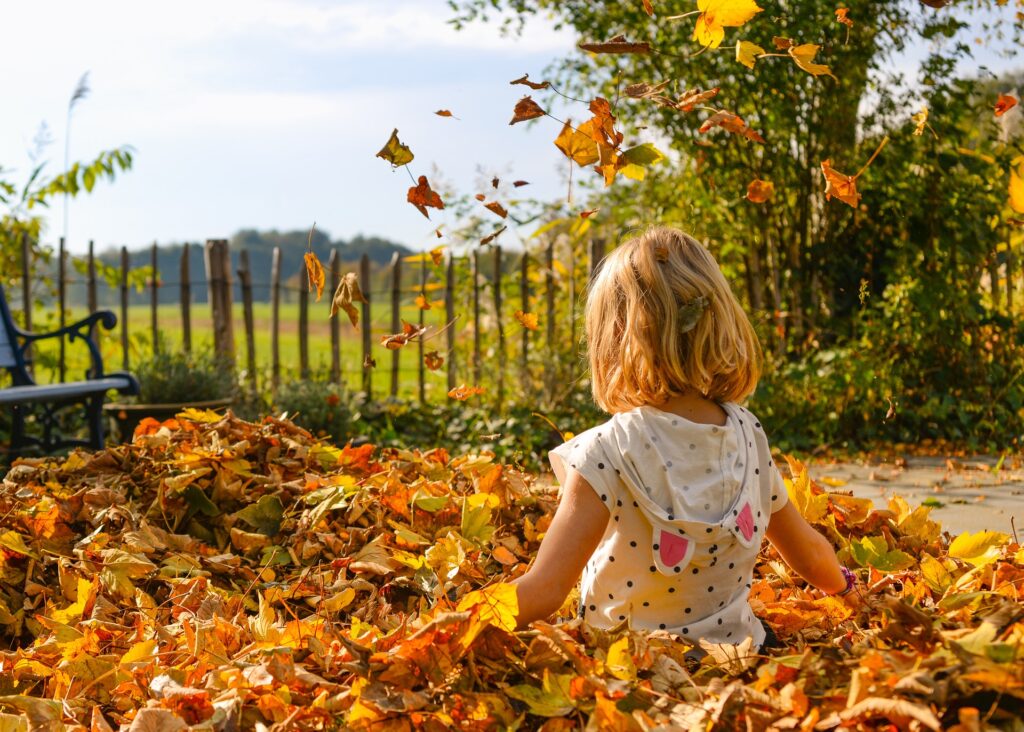
(Some of the links within this post are affiliate links on which I receive a small compensation from the sale of certain items with no extra cost to you.)
(As an Amazon Associate I earn from qualifying purchases.)
Positive Impacts of Fallen Autumn Leaves – Provides a Healthy Environment
Fallen leaves have a great impact on our ecosystems. Once on the ground they add valuable nutrients to the lawn and garden, and they create wildlife habitats. The health of our environment is dependent on factors such as clean air, a stable climate, an adequate water supply and preserving nature. According to the World Health Organization (WHO), “healthier environments could prevent almost one quarter of global diseases”.
Benefits of Fallen Leaves
- As stated above, the fallen leaves create much-needed wildlife habitats by providing food, shelter, bedding and/or nesting areas for critters and invertebrates which naturally help keep our Earth healthy.
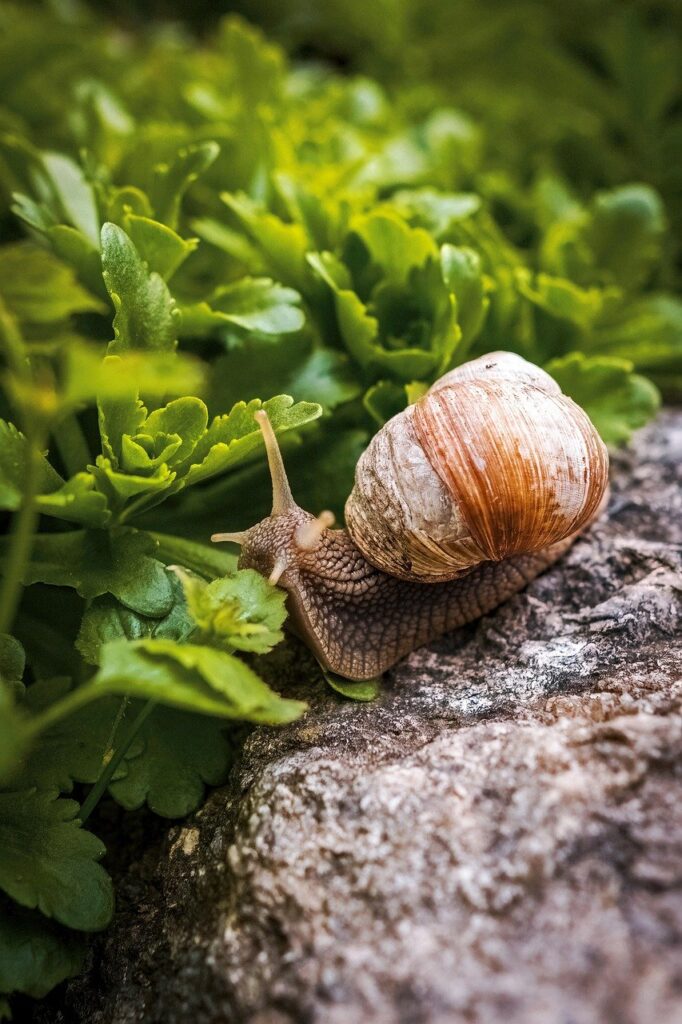 Moth and butterfly caterpillars (pollinators) will overwinter in piles of leaves and eventually metamorphose in the spring.
Moth and butterfly caterpillars (pollinators) will overwinter in piles of leaves and eventually metamorphose in the spring.- Other pollinators, such as bumble bees and mason bees, also overwinter in piles of leaves. Pollinators are necessary for crop development.
- The autumn leaves will eventually decompose and add nutrients such as carbon, nitrogen, phosphorous, and potassium to the soil. They decompose via microbes and worms.
- The leaves form a natural mulch that fertilizes the soil and suppresses weeds. Therefore, it helps you save money! No need to buy amendments, such as manure or compost, or mulch for the garden.
- Leaves spread in beds help with water retention.
Negative Impacts of Bagging Autumn Leaves-What NOT to do With Leaves
In the autumn I see many bags of leaves at the curbside. If you are bagging them in non-biodegradable plastic and kicking them to the curb for a normal trash pick-up, the bags end up in landfills which add to methane that is released into the air.
According to the US Environmental Protection Agency approximately 35 million tons of yard waste (including autumn leaves) are collected in landfills. This equates to 12.1% of all solid waste in landfills. It is compacted and does not receive enough oxygen to decompose, resulting in the expelling of methane gas into the atmosphere. This methane gas traps heat in the atmosphere causing the greenhouse effect, hence global warming and climate change.
What is the Greenhouse Effect?
Greenhouse gases such as methane and carbon dioxide have a negative effect on our Earth. According to Topics: European Parliament “greenhouse gases act similarly to the glass in a greenhouse. They absorb the sun’s heat that radiates from the Earth’s surface, trap it in the atmosphere and prevent it from escaping into space. The greenhouse effect keeps the Earth’s temperature warmer than it would otherwise be, supporting life on Earth”.
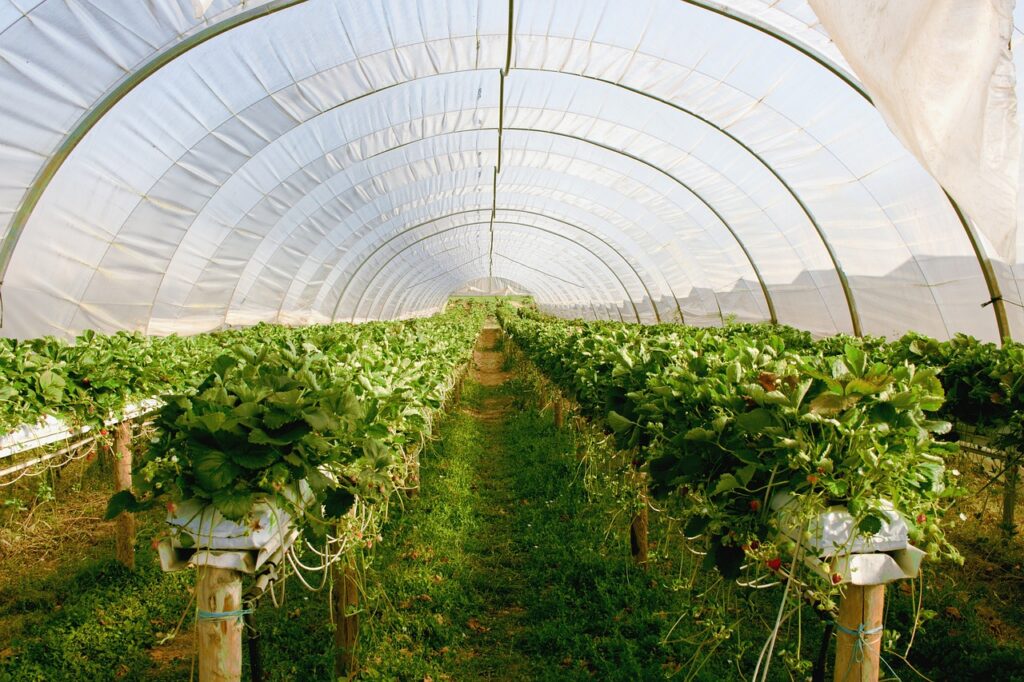
The top of the greenhouse simulates the atmosphere’s canopy above the earth holding in gases.
Some greenhouse gases occur naturally however, human activity has significantly added to the accumulation of such gases. This exagerated greenhouse effect has drastically altered our planet’s climate.
Effects of Global Warming
Global warming has wreaked havoc on the Earth, causing unusual climate changes. Recently, devastating floods in western North Carolina and other parts of southern Appalachia and the sunbelt caused by unprecedented hurricanes have left many areas forever altered. Unusually warm falls and winters in the northern parts of the US and prolonged droughts in areas which normally see adequate amounts of rain throughout the year have become more common.
The devastation caused by hurricanes has increased exponentially in recent years due to climate change and global warming. Not only have hurricanes increased in size in record breaking time, but they have also dropped unprecedented amounts of rainfall causing catastrophic landslides and flooding, and have also triggered numerous and massive tornadoes.
So how can we as simple gardeners help modify these effects? Change the habit of bagging leaves and kicking them to the curb!
What to do With All Those Autumn Leaves?
Here are a few suggestions:
A. If you must bag leaves, use biodegradable bags in which you can take them to drop-offs in your community that turn yard waste into compost and mulch. Google “yard waste facility near me” to find a local site. Where I live there are pick-ups on Wednesdays that take them to such drop-off sites.
B. Leave the leaves where they are and chop them up using a mulching mower (mulch attachments for lawn mowers) or use your regular mower and mow them over a few times during the season. This will create smaller bits which will more easily decompose and add nutrients to your lawn.
C. Put the leaves in a garbage can and use a string trimmer to whirl them into smaller pieces and then scatter them throughout your yard.
D. If you have an overabundance of leaves, leaving them on the ground to get damp and wet can kill the grass. Instead gather them before your yard reaches this point and transfer them to flower or vegetable beds, or use them as mulch around trees. Do not pile the leaves up the tree trunk; it could smother the tree and add unwanted diseases to the tree.
Sweep or rake them onto a large blanket and then drag them to the spot, or collect them using a bagger on your mower and then deposit them.
Using an electric rather than a gas leaf blower will also cut down on harmful emissions.
E. Add them to your compost pile. Alternate the leaves with food waste throughout the winter. For more on composting, click Easiest Way to Compost.
F. Leave them in a big pile in a part of your yard. By spring the bottom layer will have decomposed enough so you can use it to amend your soil in flower beds or vegetable gardens.
G. Build a brush shelter full of leaves, twigs and branches. Beasties such as turtles, toads, birds, mammals, and invertebrates will thrive in this added environment.
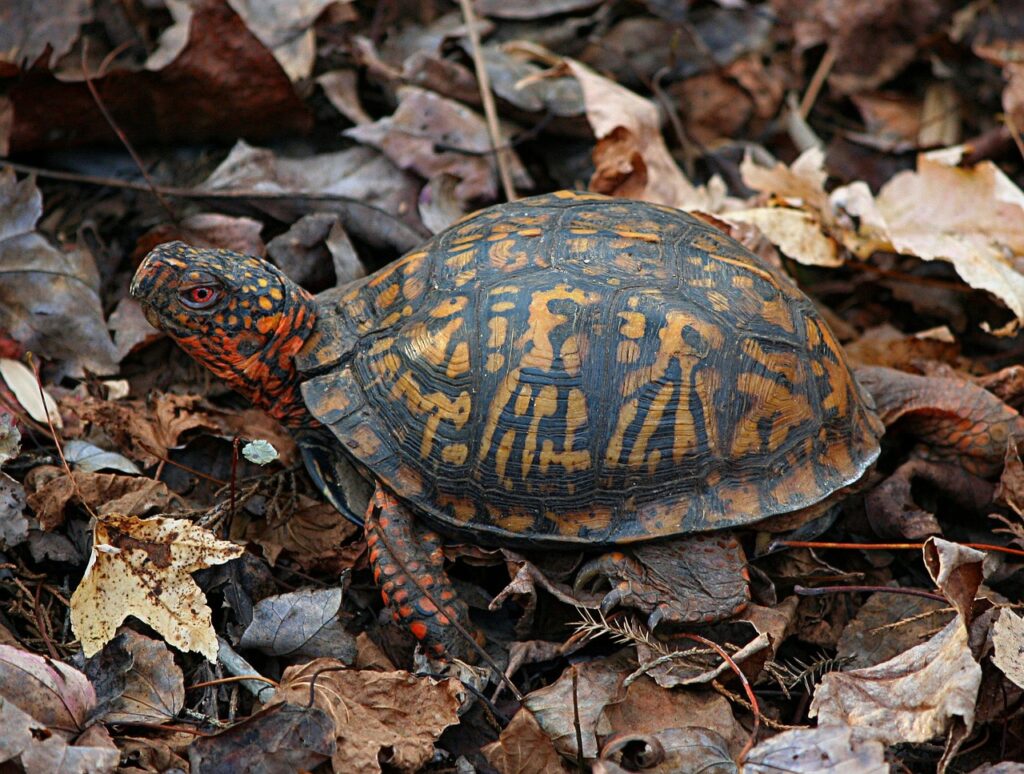
H. If you still have an overabundance of leaves, share them with neighbors, friends, schools, or your municipality to create good compost.
To Rake or Not to Rake? Leave the Leaves
Leaves have many benefits including adding nutrients to the ground, retaining water, and creating habitats for critters and pollinators alike. Collect them in a responsible way so they do not add to the harmful gases destroying our atmosphere. Create brush shelters for nature’s creepy crawlers and such, use biodegradable leaf bags to collect leaves, or use them as fertilizer.
As a simple gardener, you can minimize your carbon footprint by disposing of and/or using the fallen leaves wisely! (As an added bonus, how about reducing your kitchen waste by almost 90% using electric kitchen composters? Check them out here.)
I hope you enjoyed this post. Please comment below and pass it on to friends and family.
Happy Gardening,
Nina
bestgardeningforbeginners@gmail.com
bestgardeningforbeginners.com

